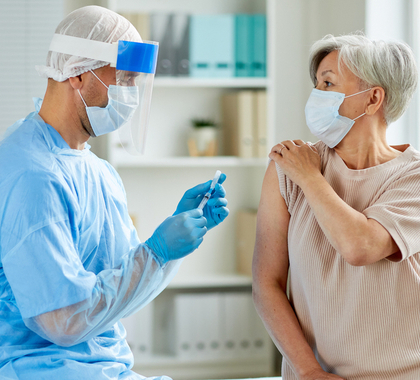One day into his presidency, Joe Biden made it quite clear that when he said he was going to go all-out in the war on COVID-19, he meant it.
One year into the pandemic that has taken the lives of over 408,000 Americans, cases continue to rise across the country. Although the number of verified cases is a staggering 26 million, studies suggest that the true case count may be up to 20 times higher than reported, due primarily to incomplete (i.e., not enough) and imperfect (i.e., not accurate) testing. Even with the rollout of highly effective vaccines, it could take many months before we achieve herd immunity. In the interim, a more robust approach to testing will be critical to protect public health, the economy and our way of life.
Because a test is only a snapshot in time, the current frequency of testing is insufficient. According to a September 2020 Rockefeller Foundation funded report, the U.S. will need to boost testing capacity from 21 million to 193 million tests per month in order to help our country return to normal. And, for critical personnel such as the brave men and women in our Armed Forces, drastically improving test capacity is vital for safely continuing operations—especially since they work in close quarters such as aircraft carriers, where SARS-CoV-2 can spread like wildfire.
We need to deploy fast, accurate and high-volume tests so people can better know their status and take steps to prevent spreading the disease. By making smart, targeted investments in innovative testing solutions, we can expand America’s lab capacity and help schools, hospitals and other key pillars of our community implement regular testing protocols to halt the spread of COVID-19.
We know that testing is most useful when it is conducted at the population level: Science suggests that scaling up our nation’s testing capacity—in addition to practices like wearing masks and social distancing—can significantly reduce viral transmission and can underpin a relaxation of stricter measures like stay-at-home-orders. Countries such as Germany, Iceland and South Korea have adopted high-volume testing strategies and have seen far fewer impacts in terms of lives lost and economic decline. Yet, in the U.S., our testing capacity has been undercut due to the limitations of available testing tools.
To date, COVID-19 diagnostic testing in the U.S. has not been delivered at a sufficient volume, and current testing tools have been either fast or accurate—but not both.
Most people are familiar with PCR tests, which involve using a nasopharyngeal swab. While useful and accurate in many situations, PCR tests suffer from several serious drawbacks and are not the gold standard for testing, according to Admiral Brett Giroir, M.D., U.S. assistant secretary for health during the Trump administration. Specifically, they do not measure an individual’s level of infectiousness, which, in practice, means someone who has recovered from COVID-19 but still exhibits remnants of dead virus will be restricted the same as someone who, at the time of testing, was highly infectious.
If we want to keep our schools and businesses running, we can’t quarantine otherwise healthy people who have already recovered from the virus. Another disadvantage of PCR is that results have been taking several days to process, during which time individuals may unknowingly expose others to the virus. According to a recent analysis, roughly one-third of individuals who underwent a PCR test waited more than four days for a result—including 10% who waited more than 10 days.
Rapid antigen tests, which detect the SARS-CoV-2 antigen directly through a swab’s reagents, have been developed to bring faster results, allowing more people to be tested more often, including at the point of care, at home or in institutional or public settings.
To overcome the pandemic and reopen our country safely, we need to increase the capacity to deliver fast, accurate, high-volume tests. Newly available, “high-throughput” antigen tests—which are processed in a lab with a quick turnaround time and high accuracy—are one key tool to overcome the deficiency with the current testing approach.
Since hundreds of samples can be analyzed per hour on these lab-based solutions, high-throughput antigen tests can help make testing in the U.S. much more effective in halting the spread of COVID-19 by providing timely and accurate results of more frequent tests. Without frequent use of accurate tests with timely and relevant results, our testing approach will continue to be a less effective public health tool than we need.
As Girior explained, “What we really want to know is who’s infectious and to get them out of the population so they can’t transmit it to other people, and simple antigen tests that are low cost and high volume do that extraordinarily well,” calling them “the backbone of our system.”
We need to be using the right test, for the right person, at the right time. As such, PCR and rapid antigen will continue to play important roles. But they alone are not the only testing tool we need in our toolkit.
By encouraging the use of innovative tools including high-throughput testing to scale up America’s COVID-19 testing capacity, we can reduce our nation’s current testing deficiencies. By increasing the relevance, frequency and accuracy of testing, together with doubling down on minimally invasive public health measures with the support, nay insistence, of an ambitious new administration, our economy can safely reopen in the months ahead.
[Originally posted on Pundicity]





